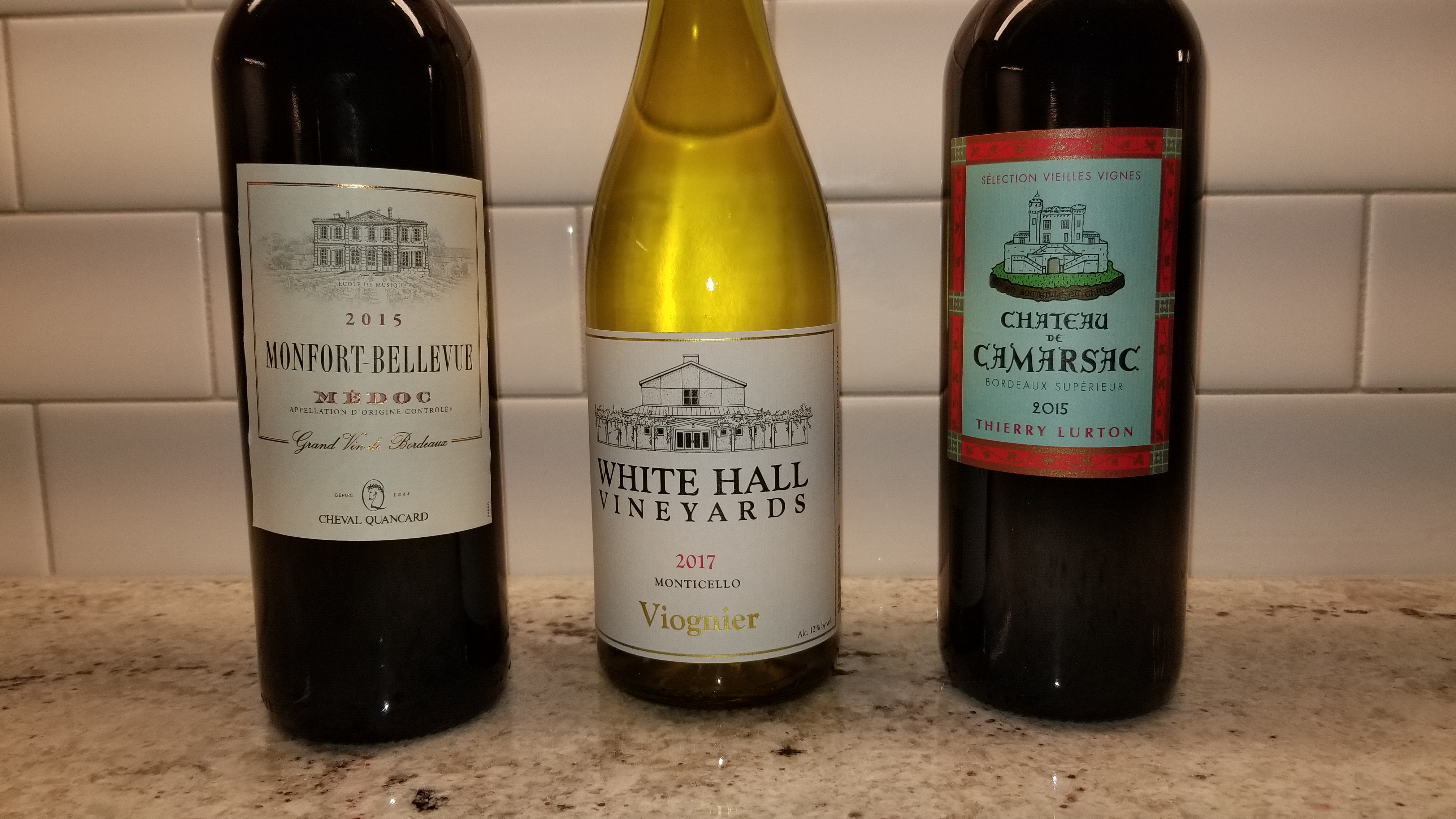
Three bottles from the private stock – and the price difference was not the tariff. (The Virginia wine goes with tomorrow’s turkey.)
Unlike most we met, the wine salesman in the shop in St. Emilion did not speak English well, but as he poured samples it began to matter less. When he heard we were from Virginia, though, his response was quick: “Oh, good wines!” We had to agree, but the case we shipped home was pure Bordeaux.
When President Trump made his recent threat to impose higher tariffs on French wine, that got my attention, and then I read in this morning’s Richmond Times-Dispatch the argument put forward in support by a Virginia wine producer. He provided some details that Trump omitted, such as what the tariffs now are.
On a case of wine imported from France, 60 cents. On a case of wine exported to France, up to $3.48.
“According to data from the International Trade Center, the United States imported $1.8 billion worth of French wine in 2017, while France bought just $71 million worth of American wine. That makes the United States the largest market for French wine, accounting for 17 percent of the country’s exports.
“This is largely because the tariff disparity makes it nearly impossible for wineries here in America to compete,” wrote Al Schornberg of Keswick, just a short trip away from El Presidente’s family operation.
That isn’t it, guys. A difference of 24 cents per bottle? Equalizing or eliminating those tariffs will not markedly change your appeal to European markets. My wife and I gave up most other forms of alcohol about two decades ago, and we started visiting Virginia wineries and were pleased as the quality improved. We visited another one up in Albemarle two weeks ago, White Hall, and brought home three bottles.
But the small wine fridge we have is also stocked with product from California, Argentina and Germany, and usually the most expensive bottles we have are those from Virginia. The volume and efficiency of Virginia’s operations cannot produce quality at the same price. Not yet. But that should be the goal.
Schornberg mentions the real problem: “For years, I’ve been searching for a distributor to carry our wines onto the shelves of stores around the country. Instead, time and time again, I am told that our wines are too expensive to compete with the wine portfolios of French distributors.” But wait, on those transactions there is no domestic tariff.
What Virginia’s wineries can do is provide a lovely setting for an outing and continuing to heavily market that should also be a key strategy. Another key part of the picture is to look at the barriers to shipping cases across state lines or internationally. Years ago, I did some work for the Virginia Wine Wholesalers on that front, but I don’t know the current state of the law. Removing any remaining barriers to direct shipment might help more than an equalized tariff.
Shipping that case from St. Emilion proved to be a challenge, far more complicated than a similar effort to ship wines back from Monterey or Sonoma, California. I ended up getting a bill for import duties. Truly free trade would remove both tariffs and direct shipment barriers.
When I see this argument start, on any product, I’m always wondering if a level playing field is not the real goal, if the proponents are really after a protective tariff. It is going to have to be a whopper to remove the price differential on French and Virginia wines of similar quality. Better to keep the competition going, because that is what will bring Virginia’s industry to world class level.


